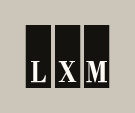Love them or hate them, the expectation that high performing Boards do a Board assessment isn’t going away.
Over the past 10 years, shareholders and regulators have heightened their expectations of Boards both in the public and private sectors largely as a result of the financial downturn in the early 2000s. Boards of companies listed on the NYSE are mandated to conduct a self-evaluation at least annually and other exchanges, including the TSX, require Boards of listed companies to disclose whether they have performed a self-assessment. Boards of public sector organizations face similar expectations.
Board assessments are now widely considered a key component of the continuous improvement activities expected of high-performing boards. Having designed and participated in several self-assessments and studied this topic extensively, experience and research confirm that, when properly designed and administered, these assessments definitively enhance Board performance.
Designing and implementing a Board assessment
Are you faced with having to design a Board assessment? The following article covers the steps involved in planning and implementing a Board assessment and recommends measures to ensure the assessment results in improved Board effectiveness.
Step 1. Designing the process
What are you assessing?
The Board’s approved undertaking a Board evaluation or it’s time for the annual Board assessment and your Board wants to try something different. Now what? If it’s the first assessment, where to start is not always obvious. The first question you have to answer as part of your design process is “what are we assessing?” Unless you can answer this question, your assessment runs the risk of consuming a lot of time while generating few gains in Board effectiveness.
Having read through hundreds of sample questionnaires and read several books on this topic, I’ve observed some commonalities in topics Board assessments can cover but there’s no generally accepted gold standard.
A good starting point for topics that could form the basis of the evaluation, in whole or in part, are the 8 components found in Beverly Behan’s book “Great Companies Deserve Great Boards”:
- Board Composition – e.g. Does your Board have the right skillsets?
- Board Information – e.g. Is the Board receiving the right amount of information in a timely fashion?
- Board Agendas and Meetings – e.g. Is sufficient time spent on strategic matters vs. compliance and oversight? Are meetings managed well?
- Board Committees – e.g. Does the Board have the right and right number of committees? Are committee mandates appropriate?
- Board Leadership – e.g. Is the Chair guiding the discussion and allowing the Board/Committee to effectively do its job?
- Board Dynamics– e.g. Is the inter-relationship of directors a positive one? Is it helping or hurting the effectiveness of the Board?
- Board/Management Relationship– e.g. Is the relationship between management and the Board a productive one?
- Board Processes (and Support Mechanisms) – e.g. Is the Board adequately supported? Are there work plans? Are actions arising from meetings tracked and followed up?
If you’re stumped and need sample questionnaires to help build your own, there are several corporate governance books and books on Board effectiveness that include sample questions. The internet is also a good place to find sample questionnaires.
Although it’s important to have a high-quality questionnaire to support the assessment, experience has taught me that the questionnaire should not be used more than twice in a row, if it’s to be reused at all. After 2 years, the same questionnaire will produce diminished gains and may trigger survey fatigue.
Rather than reusing the same questionnaire, subsequent assessments should change the focus and if possible, be approached differently. For example, instead of surveying just the directors, a subsequent assessment could survey more participants; the scope of the assessment could be broadened by adding peer-to-peer evaluations as part of the process (discussed below), or the assessment could focus on a particular area of governance instead of covering a broad list of areas. A different approach from assessment-to-assessment will also help maintain the engagement of the directors who must participate in these assessments.
Who will be evaluated?
Board assessments normally include an evaluation of the full Board’s performance in one or all components of effectiveness and extend to committee effectiveness.
Board and committee assessments are normally not controversial among Board members and it’s typical to cover all of these entities in a comprehensive Board evaluation.
Board assessments can also include individual director performance on a self-evaluation basis and/or peer-to-peer evaluation.
It is normal to see a level of reluctance among directors to engage in individual self-assessments and peer-to-peer assessments as people normally join a Board to contribute their expertise – not to have their individual performance assessed. That being said, individual and peer-to-peer assessments are increasingly gaining favour. A strong Board versed in good governance practices should expect to include individual evaluations at some point.
If the individual/peer-to-peer option is included in the scope of your Board assessment, given the importance of protecting the integrity of the director-to-director relationships, it’s highly recommended that an independent third party administer the process in order to minimize the risk of information being inappropriately disclosed or inappropriately translated for feedback purposes.
Who will participate?
Evidently, all directors should participate in the process as it is a self-assessment of the Board and its committees. There may be some consternation among new directors who may feel they have nothing to say so when designing a questionnaire, you may wish to include questions that apply to the newer directors.
It may also be useful to include senior management, corporate secretariat staff and stakeholders in the assessment if you are interested in receiving feedback on Board effectiveness in relation to any of these parties.
Whether to expand the pool of participants providing feedback is a good idea for your Board depends on what is being evaluated. It is also important to consider the benefit of adding participants in light of the additional time and resources additional participants may add to the process.
Who will plan and lead the evaluation?
A Board assessment can be planned and led by the Chairperson, the governance committee chair or some other lead director, the corporate secretary or an independent advisor – or a combination of any of these parties. Your selection will normally depend on the level of priority being given to this exercise and the cost, confidentiality concerns and resources available to run the process.
If your process contemplates in-person interviews, then it is largely believed that using an independent advisor is the best way to ensure participants will speak freely but this has to be judged in your specific context.
An independent advisor is also best positioned to translate and report the feedback while keeping confidential source material separate from the organization and Board. While lead directors and Chairs may be able to elicit open feedback (provided they have credibility, are trusted and not at the root of a problem) they are often not be best equipped to take on the additional work associated with conducting the evaluation.
What tools will be used? Questionnaire, Interviews or both?
Questionnaires
While there is some disagreement on the value of survey-based Board assessments among the experts, most agree (as do I) that an appropriately crafted survey has its place in a Board assessment exercise. Surveys articulate the areas under evaluation and offer a starting point for discussion where in-person interviews are planned.
If the Board elects to proceed on the basis of interviews alone, then the individual conducting the exercise should be required to present, in writing, the topics that will be covered in the areas so that the Board can approve the scope of interviews and so interviewees can prepare their thoughts in advance.
Interviews
Although more resource and time-intensive, one-on-one interviews are generally believed to yield better feedback and therefore provide greater value in assessing Board effectiveness. It is also generally accepted that the more independent the interviewer, the better the feedback will be.
Whether interviews are included will depend, again, on cost, confidentiality concerns or resources the Board is prepared to devote to the exercise.
Step 2. Performing the Board assessment
This step is self-explanatory. Provided the assessment was carefully designed and the process follows the plan, performing the assessment should go smoothly.
Step 3. Preparing and presenting the report
The assessment will necessarily culminate in a report including recommendations for improvements.
For Board and committee assessments, whether it is an aggregation of numerical responses with comments or something more in-depth, someone will need to be appointed to compile the information and prepare an anonymized report (ie. without attributing the comments) for the governance committee and/or Board discussion.
The report should identify areas of weakness and recommend actions for improvement which the Board will discuss and approve (or not). If confidentiality concerns are an issue, these discussions can be held in camera and approvals on action items noted by a designated individual participating in the in-camera discussion.
If the corporate secretary has been excluded from the process due to confidentiality or other concerns, at this stage – after the Board has approved the action items – it’s a good idea to reintegrate the corporate secretary into the process. Recommended action items should be summarized into an improvement plan and the corporate secretary should be tasked with supporting a designated committee or director in overseeing the plan.
Where individual/peer-to-peer assessments have been conducted, either the Chairperson or the independent advisor should have individual feedback sessions with each director to discuss their results. These individual results should not be distributed to the full Board and if the plan is to share the results with anyone internal (ie. the Chair or another director) it is important to first obtain the individual director’s consent to do so and ensure the information is kept confidential and secure.
Step 4. Tracking the implementation of actions
If there are many actions to undertake as a result of the assessment, it’s usually better to address them in an incremental fashion rather than all at once. The Board should be updated on progress on the action items at every meeting as a standing item on the agenda.
Step 5. Planning your next Board assessment
While a number of publications suggest the Board evaluation should be conducted annually, this may be too frequent for some Boards, particularly those that are working through action items from the previous year. In the federal Crown corporation sector, some Boards have moved to a biannual or triennial schedule after having determined that an annual evaluation was too frequent.
If your Board is regulated to perform a Board assessment annually, after your initial full-scale Board assessment, it may be a good idea to adopt a practice of only doing intensive assessments on a 2-, 3- or 5-year cycle. In the off-cycle years, unless a major issue has crept up during the year, the Board can simply do a “pulse check” with a simple targeted questionnaire administered by the corporate secretary.
Conclusion
Having helped design and administer self-assessments, and having participated in Board evaluations as a director, I’ve seen the positive impact they’ve had on Board performance. While there’s been no causal relationship established between Board effectiveness and superior corporate performance, the crises we’ve seen in 2000-2010 and the ensuing standards imposed to enhance Board performance and accountability suggest that stakeholders and shareholders have come to expect that Boards will engage in regular self-assessment and self-improvement activities.
Even if your organization is not legally bound to do self-assessments, as a matter of best practice and Board diligence, conducting a regular Board assessment makes good business sense for any high-performing Board.

